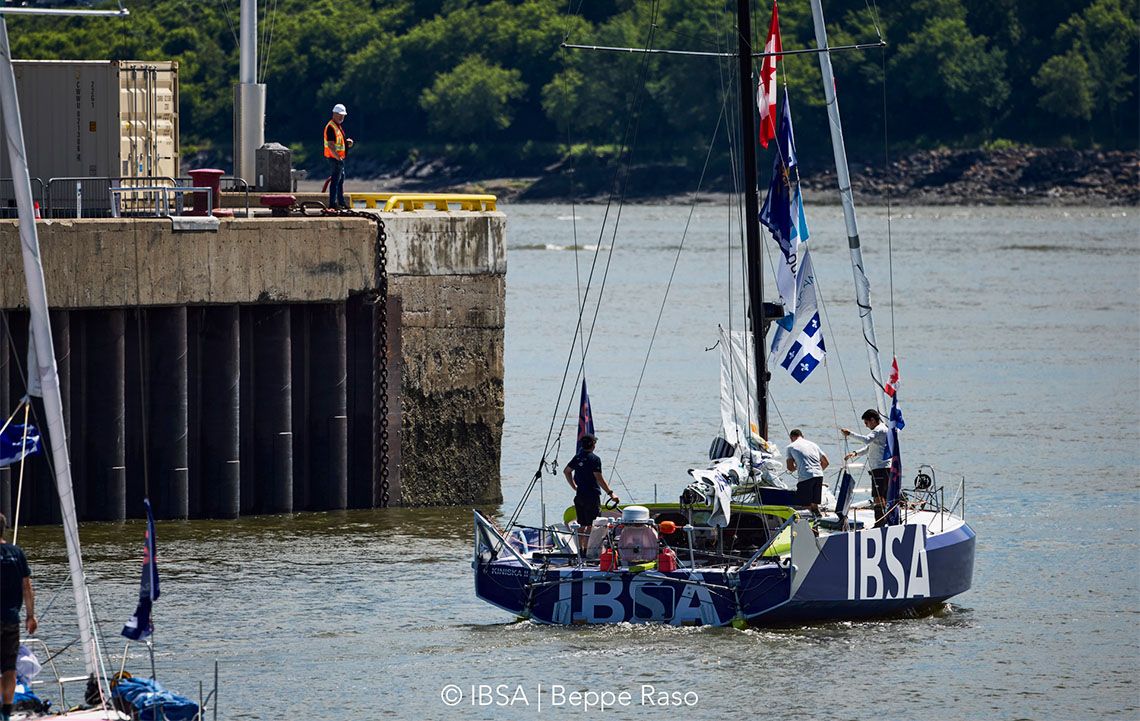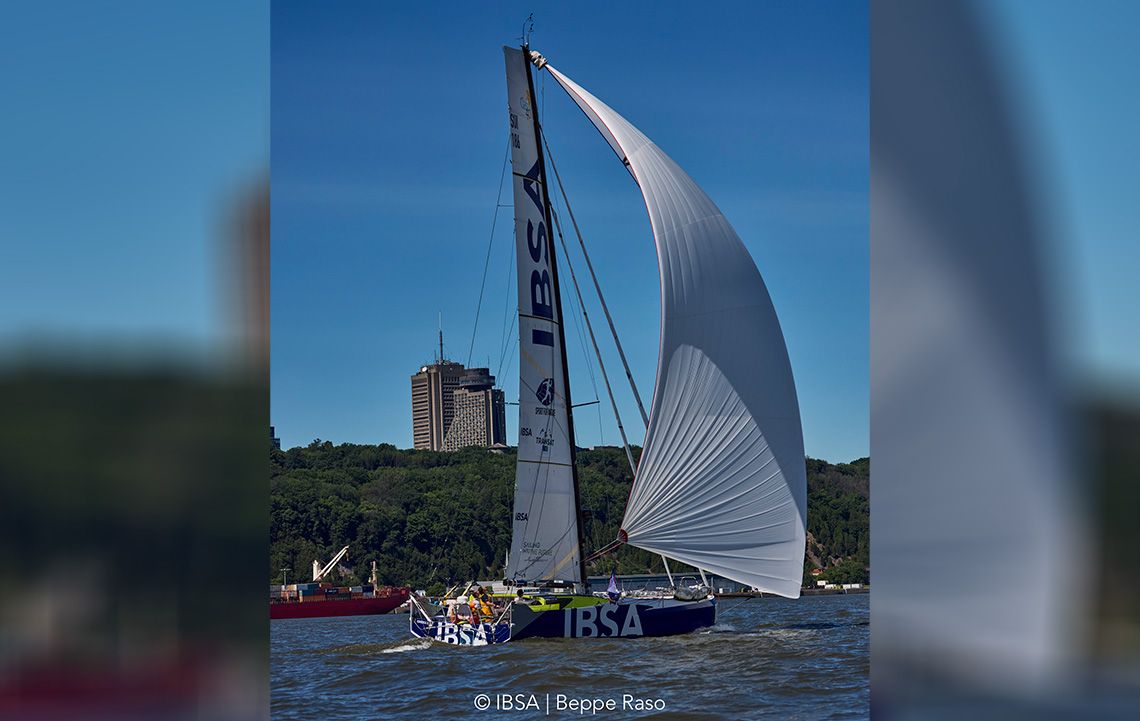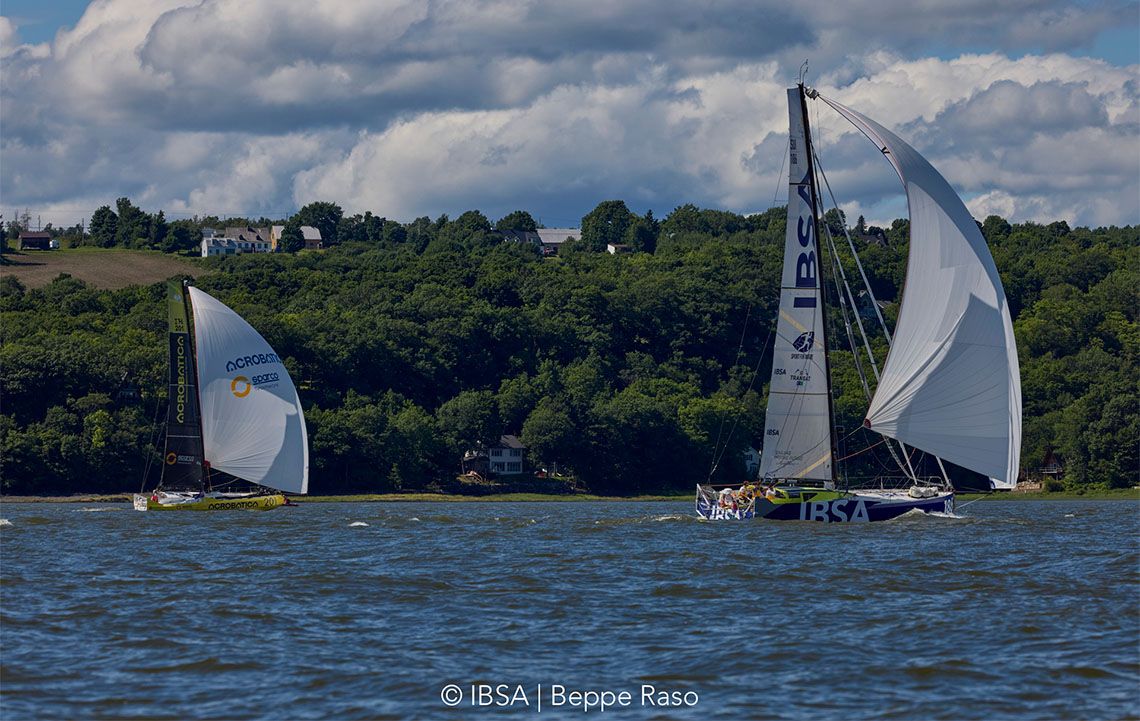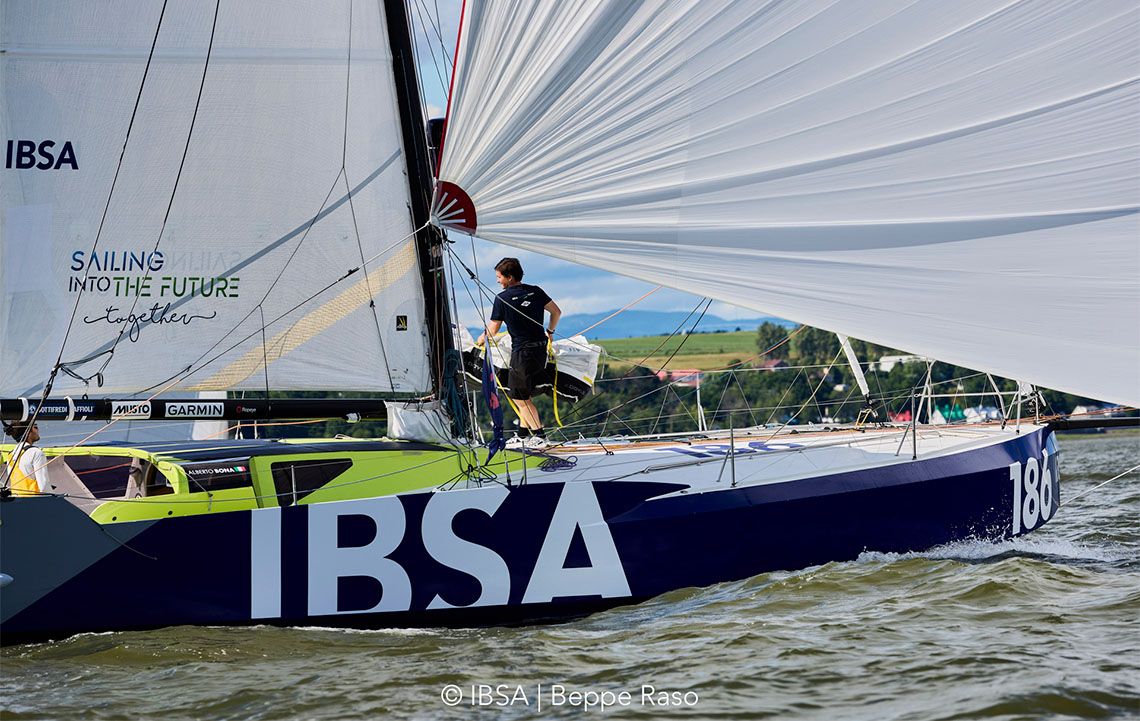A return regatta to Europe, more precisely to France: the 10th edition of the Transat Québec Saint-Malo departed on Sunday, June 30 at 2:15 pm local time (8:15 pm European time) from Québec City, Canada. It’s the last Atlantic crossing of the project Sailing into the Future. Together, which – in addition to IBSA – sees other 24 Class40s on the starting line. This legendary regatta is back after eight years – the edition scheduled for 2020 was cancelled due to COVID – and ocean sailors have been eagerly awaiting this moment. Skipper Alberto Bona, together with Spaniard Pablo Santurde del Arco and Italian Luca Rosetti, will face a real test of maturity: a crewed regatta in the cold waters of the North, starting from the St. Lawrence River.
The Transat Québec Saint-Malo – the last transatlantic regatta for the Class40 IBSA’s return to Europe – has started
FOUR CHALLENGES IN ONE

Only one regatta, but four very different areas to cover. The first leg of the Transat Québec Saint-Malo is a river regatta. Indeed, the boats will sail approximately 300 nautical miles along the St. Lawrence. They will then reach the river’s estuary and Newfoundland, before crossing the Atlantic Ocean at high latitudes, in search of the best route to “land” in Europe. Once entered the English Channel, they will cross the finish line in front of Saint-Malo, Brittany, where in 2022 everything began for the project Sailing into the Future. Together with the start of the Route du Rhum, the first of Alberto Bona's transoceanic regattas on board the Class40 IBSA.
“It will be a difficult race”, explained Alberto before the start. “A test where we can never lose concentration, since sailing along the river is new for all of us, as is racing in the Atlantic at these latitudes. We know the eastern part of the ocean well, but we have already seen in the past how arriving in the Channel from the West hides many dangers and requires particular attention in the final phase of the test, when you are most tired”.
A DIFFICULT START

The Transat Québec Saint-Malo held surprises right from the beginning: just a few minutes from the start, gusts of strong wind, rain and hail hit the fleet. However, the crews were not caught off guard and immediately took the correct route, which saw them side by side along the narrowest part of the river, a situation that forced them to carry out several manoeuvres.

At the start, the Class40 IBSA positioned herself among the top ten, keeping to the right side of the race course, trying to make as few gybes as possible compared to other crews. Two hours after the start, Bona and his team advanced to the third place, and then faced the gusts of wind, knowing that every tenth of a mile gained must be defended with determination. The first 140 miles and the first hours of navigation are in fact crucial, since exiting the St. Lawrence River in a good position will ensure an advantage in the approach to the Atlantic Ocean.
THE ATLANTIC AND THE ARRIVAL IN SAINT-MALO, WHERE IT ALL BEGAN
Once reached the Atlantic, the approximately 2,400 miles of ocean remaining (which adds up to approximately 500 between river, estuary and English Channel) will be sailed running, and – if the weather is that typical of the season – the boats will be pushed by a strong wind which will make the crossing challenging but extremely exciting. The arrival, then, is expected in the beautiful Breton town of Saint-Malo, in France, in the same place where it all began in 2022.
“This closes a very beautiful circle”, commented Antonio Melli, Vice President of IBSA, who attended the start. “This wonderful sport, where there is respect, friendship and shared intent among participants, allowed us to express all IBSA’s featuring passion, commitment and sensitivity. In these three seasons, we introduced IBSA into the world of sailing, but also sailing into IBSA’s world, telling a story that united us in the name of sport and sustainability. A truly virtuous path, where we found ourselves rooting for a tiny dot in the ocean, a boat that has been able to overcome great challenges”.
FORECASTS AND ROUTES
According to the information processed by the navigators, it will take approximately 12 days to cover the almost 3,000 mile of the route: four days in the river, seven in the ocean and about a day to face the currents in the English Channel, where ocean sailors all play “at home”, knowing those stretches of sea very well. The arrival will not be easy, and the last few miles could upset the ranking, penalising those who make errors in tackling the fearsome currents and tides along the Breton coast.








